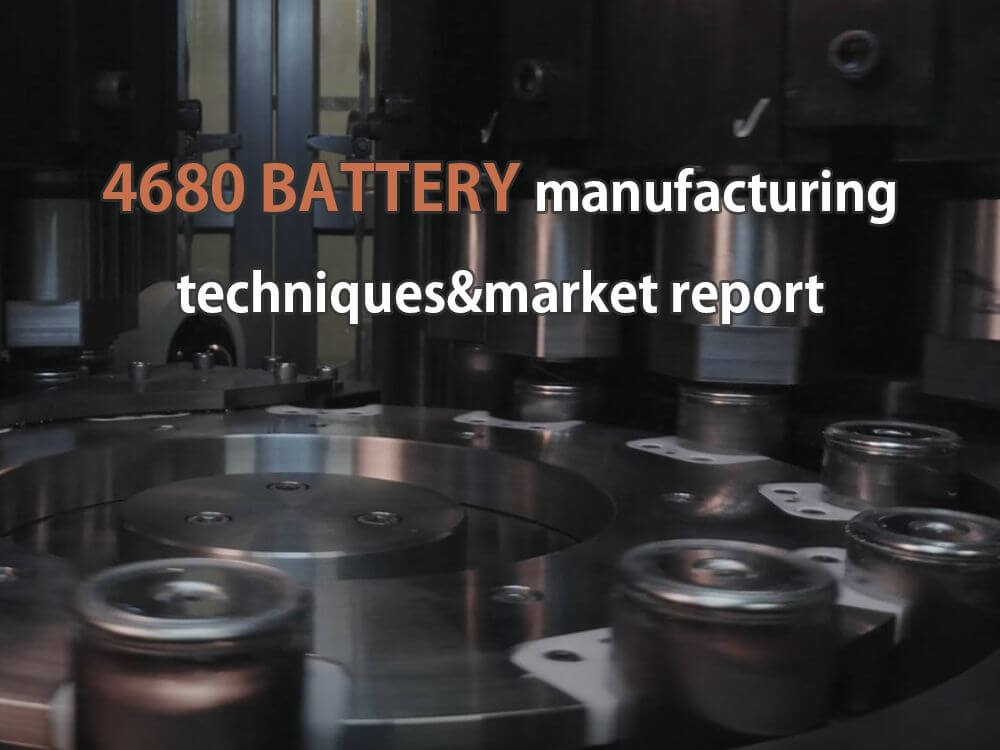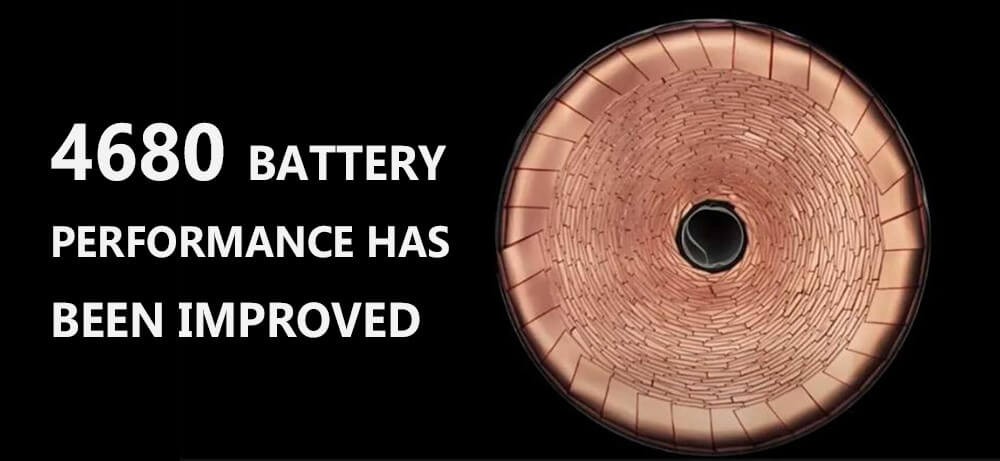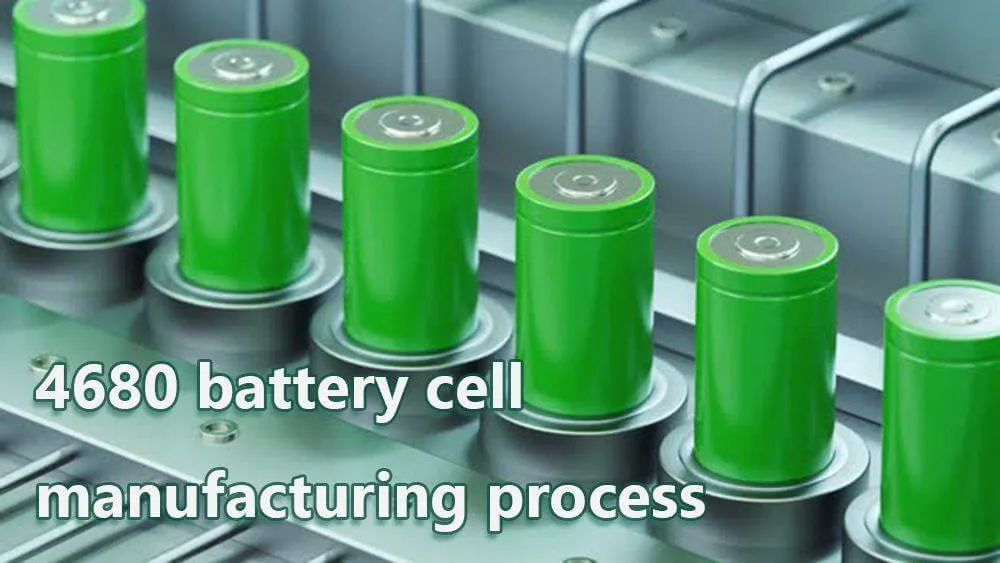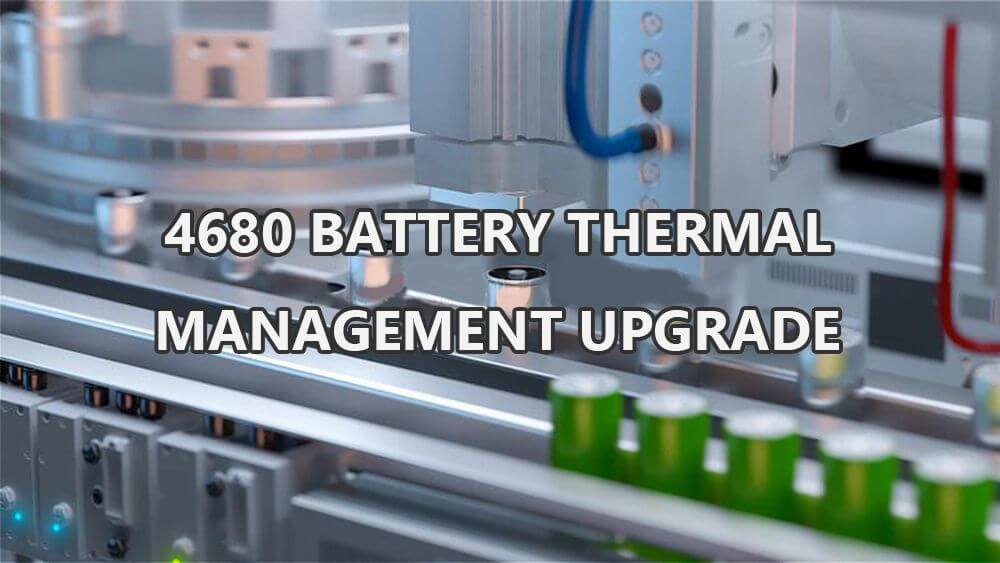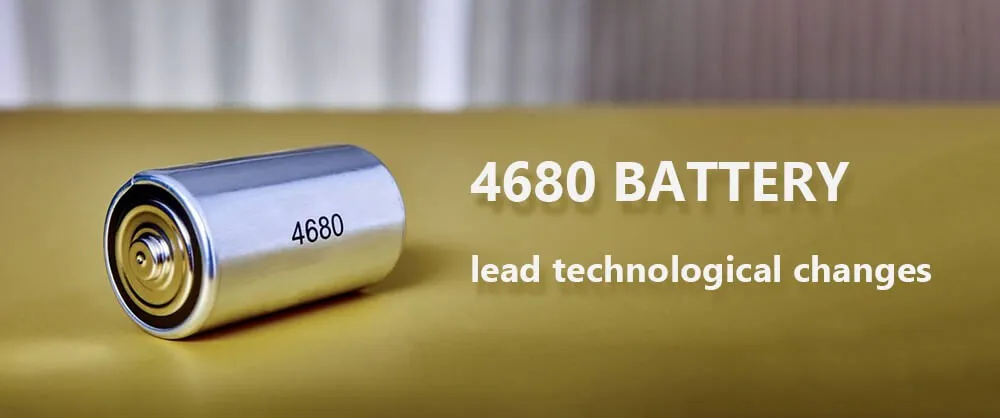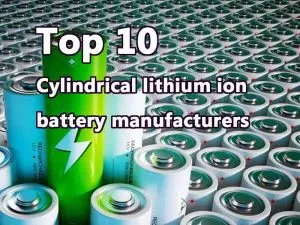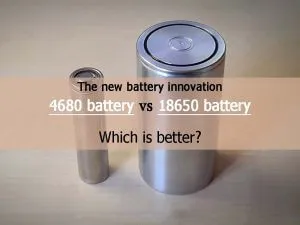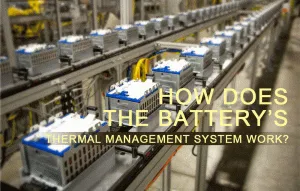Tesla 4680 battery manufacturing techniques&market report
Table of Contents

Tesla 4680 battery performance has been improved
Cell design
Only the form factor changes, the tesla 4680 battery costs 14% less per kWh than the 2170. The power of a single cell increases to 5.48 times as the volume increases, and the shell material increases by less than 3 times. Fewer cells reduce assembly time, improve group efficiency, and further bring cost advantages.
Only the external dimension changes, the energy density can be increased by 10%; when the silicon carbon negative electrode is replaced, the energy density can be increased by 20% to more than 300wh/kg.
Cell factory
Costs will be reduced by 18% as manufacturing processes are simplified, line efficiencies are improved, and processes are improved. Tesla’s design starts from electrode coating, winding, assembly, chemical formation and other links to improve production efficiency. Overall, the large cylindrical battery can achieve continuous and uninterrupted production.
The manufacturing process is less than the soft case and the square aluminum shell (about 10 processes for a large cylinder). The production line time is short (about 7 days for large cylinders, about 10 days and 12 days for square and soft bags, respectively), which improves the turnover rate and reduces the inventory rate.
4680 cell manufacturing process
- Coating process
Dry electrode technology production equipment occupies 10 times less floor space, 10 times less energy consumption, and 10%-20% less cost. The wet process involves mixing the powder and solvent, applying it to the foil, placing it in a drying oven to dry it, and recovering the solvent. The dry process saves the solvent link, but the uniformity and adhesion are more difficult to control. The coating process is still in the research and development stage.
- Winding
Because of the tabs, battery production needs to be constantly started and stopped. The tesla 4680 battery is all-pole lugs, and the winding process can achieve continuous high-speed uninterrupted production, reaching a high-speed manufacturing of 300ppm, while the square aluminum case is generally only 10-20ppm.
- Assembly
Improve efficiency through continuous flow assembly. Tesla designed a production line with a capacity of 20GWh, increasing the output of each line sevenfold. This process reduces unnecessary transportation links.
- Formation
By improving the efficiency of formation, the investment cost of formation is reduced by 86% and the floor space is reduced by 75%. Formation refers to charging and discharging the battery and testing the quality of the battery, typically charging and discharging a single-cell battery.
Tesla, on the other hand, charges and discharges thousands of batteries at the same time, significantly improving the cost-effectiveness and density of chemical devices.
- Vehicle integration
Model 3’s long-range battery pack consists of 4 modules connected in series. The large module (yellow) contains 25 battery blocks in series, and the small module (green) contains 23 battery blocks in series.
Each battery block consists of 462170 cells connected in parallel, which is a composition, a total of 4416 cells. The tesla 4680 battery adopts CTC technology, no module assembly, and integrated die-casting technology, which can save 370 parts, reduce the body weight by 10%, and reduce the unit cost of the battery by 7%.
The proportion of tesla 4680 battery cell area modules has increased. The total battery capacity is increased by 15.9%, the battery life is increased by 16%, and the system energy density is increased by 25%.
4680 thermal management upgrade
At present, the power battery adopts a large amount of small-capacity batteries to be grouped in series and parallel to meet the requirements of high energy. The power battery accidents that have occurred in recent years are all caused by the battery thermal management system in the battery pack, which generates a large amount of heat, which causes the surrounding battery cells to be heated, thereby causing the thermal runaway to spread.
Therefore, there are three core factors that lead to the thermal runaway of the battery pack: the energy released by the single cell, the heat insulation capacity of the surrounding cells, and the unit heat dissipation capacity.
The energy of the cylindrical monomer is low, the energy released by the monomer is small, and it is not easy to cause heat spread compared with the square and soft package. From the perspective of the monomer level, the security order is: small cylinder > large cylinder > soft package > square.
In terms of size, the current ratio of the tesla 4680 battery is a perfect critical point. It may continue to be larger in height, but larger in diameter, heat dissipation will be a problem.
The thermal insulation ability of the cylindrical battery is stronger. Compared with the tight connection between the square battery and the soft pack battery cells, the cylindrical arc surface of the tesla 4680 battery can limit the heat transfer between the batteries to a certain extent.
The 4680 batteries adopt a combination of top water cooling and side water cooling. A complete water-cooling plate is used on the top, and thermally conductive foam is used on the side for heat conduction, which further improves the cooling efficiency on the original side water cooling of the cylinder. The water cooling area per kWh of the 4680 batteries is 1.64 times that of a square and 1.53 times that of a soft pack.
Electrodeless ears further improve heat dissipation. The tesla 4680 battery adopts the all-pole/non-pole-lug scheme, that is, the metal tabs that are drawn and connected from each layer are removed, and the two ends of the battery are directly changed to conductive materials, so that they can directly transmit current.
While the battery has become larger, the current path is shorter. Reduced from 250 mm to 50 mm, the current conduction area is larger, and the impedance is greatly reduced, making the temperature rise of high current charging and discharging smaller.
The 4680 greatly increases the heat dissipation area of the battery cell, and the heat transfer is more uniform, and the ternary material that is more sensitive to safety is more attractive.
Tesla 4680 battery lead technological changes
After the cost reduction of the ternary 4680 cylinder, the cost is similar to that of the iron-lithium square, and the safety is also improved. The tesla 4680 battery has a single capacity of about 24Ah, which is smaller than 100-300Ah of a typical square battery. The influence of the single thermal runaway is small, and the pressure relief direction is controllable.
The superimposed full-pole design makes the ternary 4680 cylindrical with low heat generation and difficult thermal management. Low. The group efficiency of 4680 cylindrical cells (about 70%) is lower than that of square shell cells (>80%). High nickel cathode materials and silicon carbon anode materials can greatly improve the energy density of cells and systems.
4680 cell is larger in size and generally use a high-precision, low-cost, higher-length steel battery case. The production process needs to overcome the following major difficulties:
- The size consistency should be high. The casing is a precision structural part, which is sensitive to dimensional tolerances, and the battery level requires a hundred-level accuracy requirement;
- The thermal diffusion requirement is high. Steel needs to meet the requirements of thermal diffusion. Compared with aluminum, steel has higher hardness and poorer ductility, so it cannot be directly manufactured using the process parameters of cans;
- The height of the battery may continue to increase.
From the perspective of battery overcurrent and heat generation, the height of the battery may be further increased, and the casing process needs to be compatible with long battery casings. Efficient production is a key element for horizontal stamping into the field of tesla 4680 battery housings.
The 4680 cell has inherent advantages using the CTC process. First of all, CTC has certain requirements on the structural strength of the battery. The battery itself has to bear considerable mechanical strength.
Compared with 18650 and 21700, the 4680 has higher structural strength, and the outer casing is generally made of stainless steel. Here is an article about 4680 battery vs 18650 for you to get clear about their comparisons.
Secondly, compared with square shell batteries, the layout of cylindrical batteries will be more flexible and can adapt to various chassis. Combined with the advantages of high energy density and high charging and discharging power of all-pole tabs, the future potential in HEV and PHEV fields is also great.

